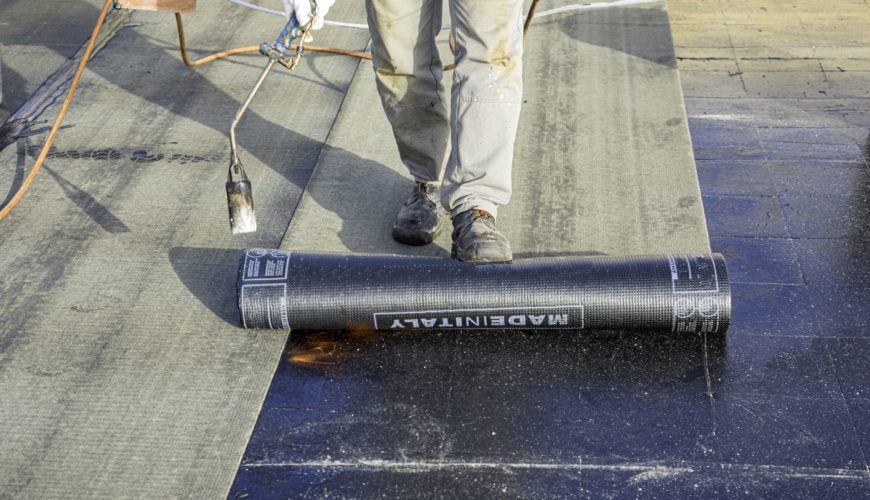If you’re in the market for a new roof, you might be considering rolled roofing as an option. This type of roofing is economical and easy to install, making it a popular choice for homeowners and businesses alike.
This guide from the team at Roof Master will walk you through the steps involved in installing rolled roofing — from choosing the right material to securing it in place and much more.
By the end of this guide, you’ll know everything that you’ll need to know about installing rolled roofing on your property.
So what are you waiting for? Let’s get started!
What is rolled roofing and what are its benefits over other types of roofing materials?
You might have seen this type of roofing before, but what exactly is rolled roofing, and why is it beneficial for homeowners?
Rolled roofing is a material made from asphalt and fiberglass that is used to waterproof roofs. It is often installed on top of an existing roof and can be used in both residential and commercial settings. While it is not as popular as some other types of roofing, rolled roofing can be a fantastic and efficient option for some applications.
When it comes to modern roofing materials, there are many options available on the market. However, not all roofing materials are created equally. For example, rolled roofing is a type of material that offers several advantages over other types of roofing.
First of all, rolled roofing is much cheaper than other types of roofing, making it an excellent option for budget-conscious homeowners.
Additionally, rolled roofing is much easier to install than other types of roofing, making it a good choice for the average homeowner who does not have experience with roofing installation or modifications.
Finally, rolled roofing is much more durable than other types of roofing and can withstand extreme weather conditions. As a result, rolled roofing is an excellent choice for any homeowner who is looking for an affordable, easy-to-install, and durable roofing solution.
How to measure your roof for the right amount of rolled roofing material
Roofing is an important part of any home, and it’s important to get the right amount of material for your project. Measuring your roof accurately will ensure you have enough rolled roofing to complete the job properly.
The first step is to measure the length and width of your roof. To get the most accurate measurements, it’s best to climb up on your roof and take measurements from the eaves. Once you have the length and width of your roof, you’ll need to calculate the square footage. To do this, simply multiply the length by the width.
For example, if your roof is 30 feet long and 20 feet wide, the square footage would be 600 square feet.
Now that you know the square footage of your roof, you can purchase the appropriate amount of rolled roofing material. Most rolled roofing materials come in increments of 100 square feet, so in our example, you would need to purchase six rolls of rolled roofing material. Be sure to factor in any waste when making your purchase, as it’s better to have too much material than not enough.
With a little bit of planning, measuring your roof for rolled roofing material of preference can be a quick and easy process.

How to install the rolled roofing material
Installing rolled roofing is a relatively simple process that can be completed in just a few hours. This guide will walk you through the steps necessary to get your roof looking great and protect it from the rain and snow.
So, if you’re looking to update your home’s exterior, read on for instructions on how to install rolled roofing like a pro:
You can successfully install rolled roofing with a few tools and some easy-to-follow instructions.
Rolled roofing is among the most commonly used products for low slope or shed roofs and is available in both mineral surface and asphalt-coated varieties. Asphalt-coated rolled roofing has a black or dark-colored surface that helps it absorb heat, making it ideal for use in warm climates. Mineral surface-rolled roofing reflects heat, making it a good choice for use in cooler climates.
Before beginning the installation process, be sure to choose the right type of rolled roofing for your climate and ensure that the roof deck is clean, dry, and free of any debris. Once you have the materials and tools you need, you are ready to install your rolled roofing!
Guide to install rolled roofing — Conclusion
Installing rolled roofing is a big job, but with the right instructions, it can be done by anyone. If you’re feeling confident and have all of the necessary tools, go ahead and give it a try!
But if you’re not sure or would rather leave it to the professionals, that’s okay too. Contact your local roofing service today for an estimate on installing rolled roofing in your home.




